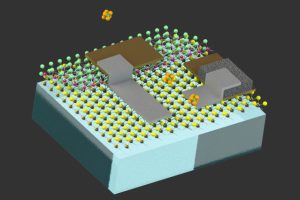In its 2017 Revision of World Population Prospects, the United Nations predicted that the world population will hit nearly ten billion around the year 2050, up from the almost 8,000,000,000 humans currently inhabiting the globe. If those projections hold true, our planet will soon feed another 2,000,000,000 mouths every day. Access to nutritious and affordable foods such as fruits, vegetables, and nuts will be key to a healthy population free from hunger. Thankfully, the human species has a few thousand years of experience with horticulture from which to draw lessons learned.
“Horticulture is defined . . . as the science that employs special techniques and methods to cultivate plants, including methods used to properly condition the soil for seed planting or planting tubers. The domain of horticulture includes cultivation, plant propagation, breeding of plants, production of crops, plant physiology as well as biochemistry and genetic engineering,” explains an article entitled the “Difference Between Agriculture and Horticulture” by DifferenceBetween.net. Put another way, the weekend warrior horticulturalists may engage in the art and science of gardening.
Advancements in sensor technology and associated embedded electronics has driven the costs down significantly. Now, even a part-time greenhouse gardener that possesses only a modicum of the “do-it-yourself” spirit can become empowered to remotely monitor his/her garden. This project will lay out a design for a device to do just that. The goal is to empower almost anyone with basic electronics and software skills with the ability to build this monitoring system.
Understanding Environment and Soil Quality
Regardless of whether one is a professional horticulturalist or amateur gardener, understanding the quality of the environment and the soil is necessary to make informed decisions that affect the quality, nutritional value, and yield of plant-based foods. Some of the crucial variables that must be monitored include:
Temperature
Extremely high and low temperatures can have adverse effects on the health of plants. High temperatures can cause an imbalance in the photosynthesis and respiration processes which can result in plant suffocation. Conversely, low temperatures can cause plant cells to freeze which inhibits a plant from getting nutrients.
Humidity
High relative humidity levels prevent a plant from evaporating water as part of its transpiration process. It can also prevent the plant from drawing nutrients from the soil. If these conditions are permitted to continue the plant could rot or suffer bacterial or mold infections.
Moisture Content
The amount of water in the soil must be kept at optimal levels for ideal plant growth. Too much water can result in root rot, which prevents the plant from extracting oxygen from the soil. Too little moisture and nutrients cannot circulate through the plant.
pH Level
If you recall from chemistry class the pH scale is a way to indicate the acidity or basicity of a substance. The scale ranges from 0.0 for acids such as lemon juice up to 14.0 for bases such as lye. A pH level of 7.0 is considered neutral. While the ideal pH level can vary from plant to plant, optimum pH levels for soil is between 5.5 and 7.0.
CO2 Level
Plants of all types absorb carbon dioxide (CO2) as part of the photosynthesis process in order to synthesize food from water and CO2. Oxygen, in turn, is given off as a byproduct. As with the other factors, too much or too little CO2 can have adverse effects on plant growth and health. As a reference, 250 to 350ppm is considered a normal concentration in an outdoor ambient environment. Indoor environments with decent air circulation should see a concentration from 350 to 1,000ppm.

 Inglês
Inglês  Chinês
Chinês  Alemão
Alemão  Coreano
Coreano  Japonês
Japonês  Farsi
Farsi  Portuguese
Portuguese  Russian
Russian  Espanhol
Espanhol 





